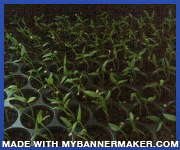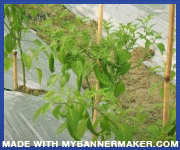
Bilimbi tree is quite attractive, with its short trunk dividing into many upright branches which have clusters of leaves, mainly at the tips. The flowers are small, deep red and have a long strong, sweet scent. The bilimbi fruit is narrow, oblong and has five shallow ridges running along its length. The fruit is crisp when unripe, turns from bright-green to yellowish-green, when ripe and falls to the ground. The outer skin is glossy, very thin and tender, and the flesh greenish-white, juicy and extremely sour. It has a few (about 6) flattened seeds about ¼ inch wide, smooth and brown.
Other Name:
- India : Bilimbi
- Indonesia: belimbing, besu
- Thailand: taling pling
- Philippines: kamias
- Haiti: blimblin
- Cuba: grosella china
- El Salvador and Nicaragua: mimbro
- Venezuela: vinagrillo
- Argentina: pepino de Indias
- France: cornichon des Indes
Nutritive Value per 100 g:
- Vitamin A: 0.035 mg
- Vitamin C: 15.5 mg
- Protein: 0.61 g
- Calcium: 3.4 mg
- Phosphorus: 11.1 mg
- Iron: 1.01 mg
- Thiamine: 0.010 mg
- Riboflavin: 0.026 mg
- Niacin: 0.302 mg
Medicinal Benefits:
- The juice is effective as eye drops (regarded as a magic curative).
- Decoction of leaves or the juice of the leaves, are often consumed as a cure for venereal disease.
- A leaf decoction is taken to relieve rectal inflammation.
- The fruit is given to children as a protection against coughs.
- A flower infusion is believed be effective against coughs and thrush.
- A leaf infusion is a remedy for coughs and is taken after childbirth as a tonic.
- The leaves are applied as poultice on itches, swellings of mumps and rheumatism, and on skin problems.
- The fruit and leaves are applied on bites of poisonous insect.
- Syrup made from Bilimbi fruit is taken as a cure for fever and inflammation and to stop rectal bleeding and alleviate internal hemorrhoids.

Culinary uses:
- The juice of the fruit is popular for making cooling and refreshing drinks similar to lemonade.
- The most common use for the fruits is a flavoring for fish and meat dishes. It also use for pickling and is substituted for mango in chutney. To reduce acidity, it may be first pricked and soaked in water overnight, or soaked in salted water for a shorter time; then it is boiled with much sugar to make a jam or an acid jelly. A quicker pickle is made by putting the fruits and salt into boiling water. This can be kept only 4 to 5 days.
Other uses:
- The high acid content of the juice makes it a good agent for removing stains from the skin.
- The juice is useful for bleaching stains from white clothe, and also tarnish from brass.
- In olden days it was used for cleaning the blade of a keris, the short, wavy dagger of the Malays.
- The juice serves as mordants (serves to fix color) in the preparation of an orange dye for silk fabrics.
























